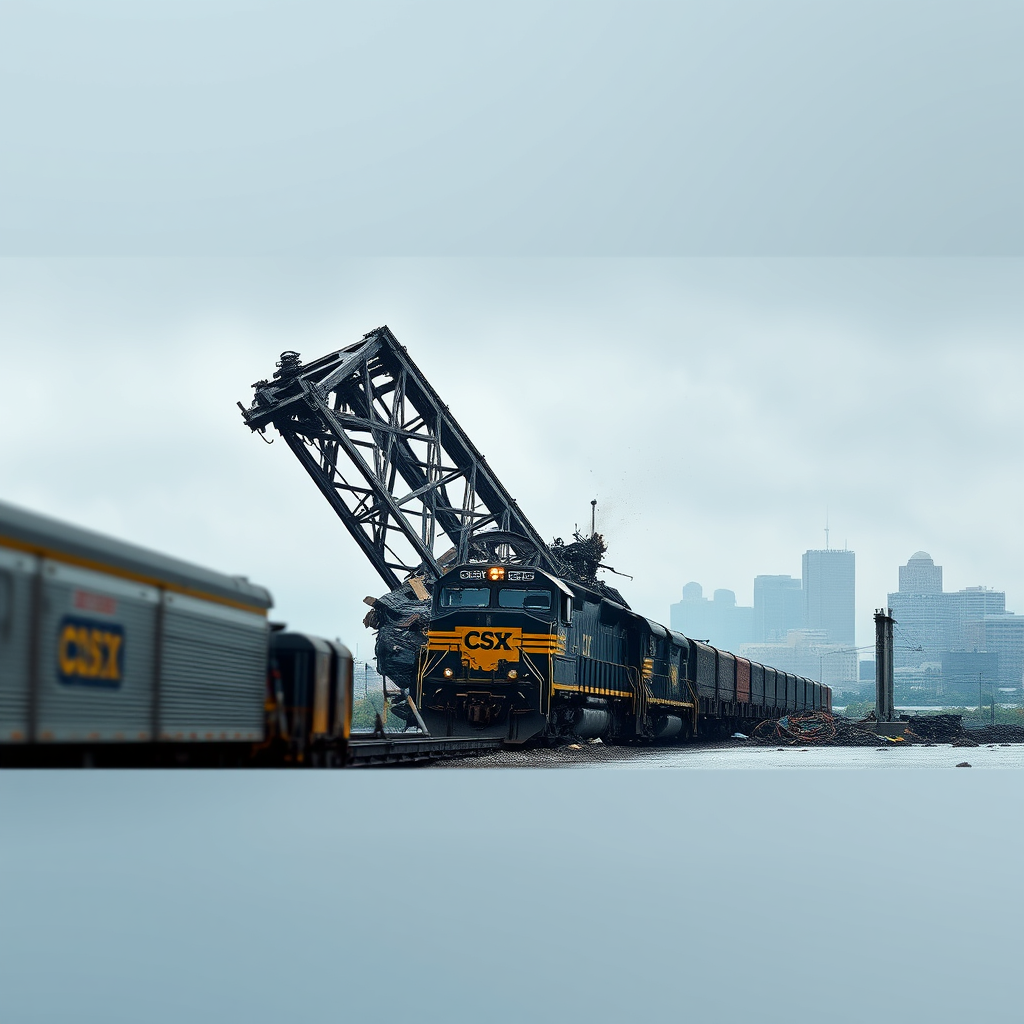Baltimore Bridge Collapse: Rail & Supply Chain Crisis

The Baltimore Bridge Collapse: Cascading Effects on Intermodal Rail Transportation
The collapse of the Francis Scott Key Bridge in Baltimore has sent shockwaves through the US and global supply chains, highlighting the critical role of infrastructure in maintaining efficient intermodal (combining multiple modes of transport) freight transport. This incident serves as a stark reminder of the interconnectedness of transportation networks and the potential for widespread disruption when key infrastructure fails. This article will examine the immediate impact of the bridge collapse on intermodal rail services in Baltimore, the strategies employed by major railway operators to mitigate the disruption, and the broader implications for the East Coast’s freight handling capacity. We will explore how this localized event triggered a domino effect impacting port operations, rail logistics, and the resilience of the overall transportation system. The analysis will delve into the responses of key players such as CSX and Norfolk Southern, focusing on their efforts to reroute freight, engage with customers, and maintain operational capacity where possible. Finally, the article will consider the lessons learned and the potential for future improvements in infrastructure resilience and contingency planning.
Impact on Intermodal Rail Operations
The bridge collapse immediately severed vital rail links to several key facilities in Baltimore, including CSX’s Curtis Bay yard (a major automotive export hub) and Norfolk Southern’s Dundalk Marine Terminal. This effectively cut off rail access to these terminals, creating a significant bottleneck in the flow of intermodal freight. The Sparrow’s Point industrial facility, lacking sufficient port facilities for container or bulk cargo handling, was further isolated, severely limiting its ability to connect with the regional distribution network. The disruption forced shipping lines like Maersk and COSCO to invoke force majeure clauses (clauses relieving parties from liability due to unforeseen circumstances), diverting vessels to alternative East Coast ports. This resulted in significant rerouting costs and delays, emphasizing the vulnerability of the supply chain to such unforeseen events.
Responses from Major Rail Operators
Both Norfolk Southern (NS) and CSX, the major rail freight operators in Baltimore, swiftly responded to the crisis. NS focused on rerouting freight to alternative ports, such as New York/New Jersey, Norfolk, Charleston, and Savannah, emphasizing rapid response, frequent communication, and innovative solutions to minimize disruption for their customers. CSX, while acknowledging the impact on some customers, maintained operations in its rail yards as long as feasible. They prioritized maintaining domestic intermodal traffic within Baltimore, while working with international customers to identify alternative transport options. CSX also assured the continued operation of its Curtis Bay coal facility, subject to capacity constraints, highlighting its commitment to maintaining essential energy supplies.
Rerouting and Alternative Transportation Solutions
The crisis necessitated the immediate implementation of contingency plans, including significant rerouting of intermodal freight. The shift of cargo to alternative ports along the East Coast created increased pressure on these already busy facilities, potentially leading to congestion and further delays. Landside transportation, including trucking, played a crucial role in transporting goods from the rerouted ports to their final destinations, highlighting the need for robust coordination between different modes of transport in emergency situations. The situation underscores the importance of flexible and adaptable transportation networks, capable of absorbing unexpected shocks and maintaining essential service levels.
Implications and Lessons Learned
The Baltimore bridge collapse serves as a powerful case study in the vulnerability of complex transportation systems. The incident exposed the interconnectedness of maritime, rail, and road transport and the cascading effects of infrastructure failure. The successful rerouting of freight and the efforts to maintain essential services demonstrated the resilience of the transportation sector. However, the experience also underscored the need for proactive measures to enhance infrastructure resilience, including robust contingency planning, diversified transportation routes, and improved communication between stakeholders. Investment in infrastructure upgrades, coupled with sophisticated risk assessment and mitigation strategies, is critical for building a more resilient and efficient national transportation system. Furthermore, this event highlights the importance of industry collaboration and proactive communication during significant disruptions to ensure minimized impact on consumers and businesses. The success of rerouting efforts demonstrated the flexibility of the system, but also the need for more efficient and robust solutions for future unforeseen circumstances.



